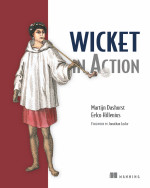As we wrap up on our
WattDepot-Cli project we gain more perspective on how the software development works. In this assignment we are to update, improve and add new commands to our version 1.0 of
WattDepot. We are still working with our initial partners and as for our group, it has never been better. Even from the start of this project my partner and I communicated every other day and delegated jobs. Our jobs weren’t so concrete which gave us a little flexibility so that we can do other things outside of this class. We also met twice a week not including the time we spent working on our projects in class. All in all my experience with my partner in producing the
WattDepot client was a pleasant one.
In terms of our client, we have improved our methods by reviewing the changes in the commands provided in the
WattDepot wiki and suggestions coming from last week’s
code review. One of the things we did was to add the necessary comments and improve our Javadoc so that any developer can understand our code and use our
API for reference. We also have added more test cases. Most are still happy-path tests but now we’ve included some behavioral test such as our validation tests. Even with more test cases our coverage is still under the healthy 90%. Our coverage is 63% because some of the new commands and old commands didn’t get tested. Other than the coverage being low, we did find that writing test cases was much easier when we refactored the commands into their own classes.
As for new materials that we learned, we used a program that displays the current condition of our program. It is called
Hackystat.
Hackystat retrieves information from our local and Hudson builds and the amount of time we spend in Eclipse. It measures and displays different categories that are pointed to the overall health of our program.
Here’s a screen shot of our program information.

The overall health of our program is a little stable. The reason for this is because of the lack of testing (30%) which consequently affected the coverage. The screen shot also shows the increasing trends of our development time commit and build because we worked on it mostly on the last four days before the due date.
The last part of this assignment is to answer some question regarding information that we gather from our program.
- What day and time during the month was Oahu energy usage at its highest? How many MW was this?
November 2-6, 9-13, 16-20, and 23-27 all had a usage of 995MW
- What day and time during the month was Oahu energy usage at its lowest? How many MW was this?
November 2-6, 9-13, 16-20, 23-27 all had a usage of 493MW
- What day during the month did Oahu consume the most energy? How many MWh was this?
Unknown
- What day during the month did Oahu consume the least energy? How many MWh was this?
Unknown
- What day during the month did Oahu emit the most carbon (i.e. the "dirtiest" day)? How many lbs of carbon were emitted?
4th, 5th, 16th, 17th, and 30th of November. 29,959 pounds of CO2 were emitted.
- What day during the month did Oahu emit the least carbon (i.e. the "cleanest" day)? How many lbs of carbon were emitted?
7th and 8th of November. 22,908 pounds of CO2 were emitted.
Our Wattdepot client version 2.0 can be found
here.


